Buying Guide for the Best Electric Start Inverter Generator
Choosing the right electric-start inverter generator can be a bit overwhelming, but with the right approach, you can find the perfect fit for your needs. Inverter generators are known for their efficiency, quiet operation, and clean power output, making them ideal for a variety of uses, from camping trips to home backup power. When selecting an inverter generator, it's important to consider several key specifications to ensure it meets your requirements. Here are the most important specs to look at and how to navigate them.Power Output (Wattage)Power output, measured in watts, indicates how much electrical power the generator can produce. This is crucial because it determines what appliances and devices you can run simultaneously. Inverter generators typically range from 1,000 to 4,000 watts. For light use, such as charging small electronics or running a few lights, a generator with 1,000 to 2,000 watts is sufficient. For more demanding tasks, like running a refrigerator or multiple appliances, look for a generator with 2,000 to 4,000 watts. Assess your power needs by listing the devices you plan to use and their wattage requirements.
Run TimeRun time refers to how long the generator can operate on a full tank of fuel. This is important for planning how often you'll need to refuel, especially during extended use. Run times can vary widely, from a few hours to over 10 hours. For occasional use or short power outages, a generator with a shorter run time may be adequate. However, for longer events or continuous use, look for a generator with a longer run time to minimize interruptions. Consider your typical usage scenarios to determine the appropriate run time for your needs.
Noise LevelNoise level, measured in decibels (dB), indicates how loud the generator is during operation. This is particularly important if you plan to use the generator in a residential area or while camping. Inverter generators are generally quieter than traditional generators, with noise levels ranging from 50 to 70 dB. For comparison, normal conversation is about 60 dB. If noise is a concern, look for a generator with a noise level below 60 dB. Consider where and when you'll be using the generator to determine the acceptable noise level for your situation.
PortabilityPortability refers to how easy it is to move and transport the generator. This is important if you need to take the generator to different locations or store it when not in use. Inverter generators are typically more compact and lighter than traditional generators, but weights can still vary from 20 to 100 pounds. For frequent transport, look for a lighter model with built-in handles or wheels. If the generator will mostly stay in one place, portability may be less of a concern. Think about how and where you'll be using the generator to decide on the right level of portability.
Fuel TypeFuel type refers to the kind of fuel the generator uses to operate. Common options include gasoline, propane, and dual-fuel (which can use both gasoline and propane). The fuel type affects convenience, availability, and storage. Gasoline is widely available but has a shorter shelf life. Propane has a longer shelf life and burns cleaner but may be less convenient to find. Dual-fuel generators offer flexibility but can be more complex. Consider your access to fuel sources and your preference for convenience and storage when choosing the fuel type.
Electric StartElectric start is a feature that allows you to start the generator with the push of a button, rather than pulling a recoil cord. This is important for ease of use, especially for those who may have difficulty with manual starts. Electric start generators often come with a backup recoil start for added reliability. If convenience and ease of use are priorities, look for a generator with an electric start feature. Consider who will be using the generator and their comfort level with starting mechanisms to determine if this feature is necessary.

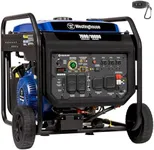
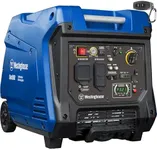
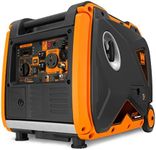


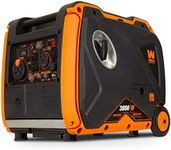

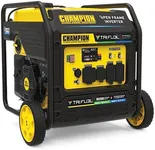




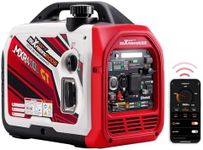
![[Upgraded Version] ALLPOWERS S2000 Portable Power Station 2000W (Peak 4000W) MPPT Solar Generator 1500Wh Backup Battery with 4 AC Outlets for Outdoor Camping RV Emergency Off-Grid](https://images-proxy.bestreviews.guide/RKciUpoEpXP6FG5NDwMBUKV-gKk=/0x150/https://m.media-amazon.com/images/I/51n9OTptdIL._AC_CX679_.jpg)






